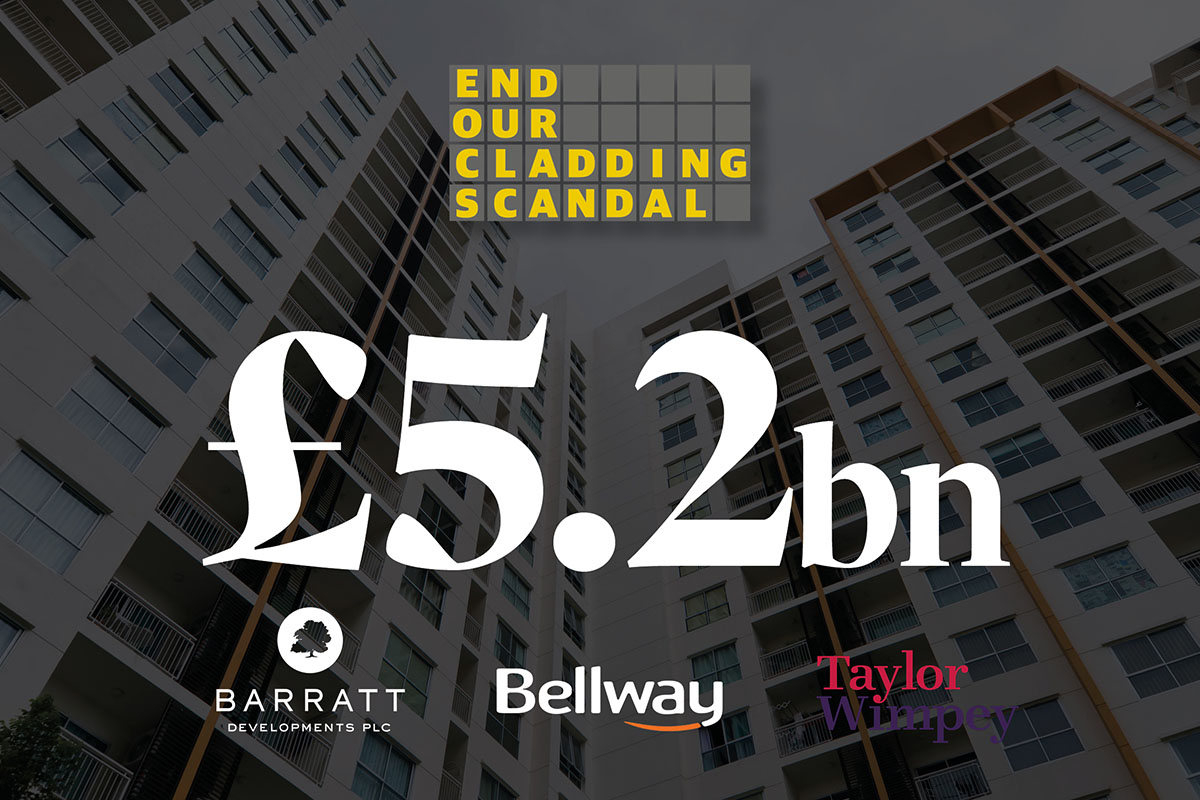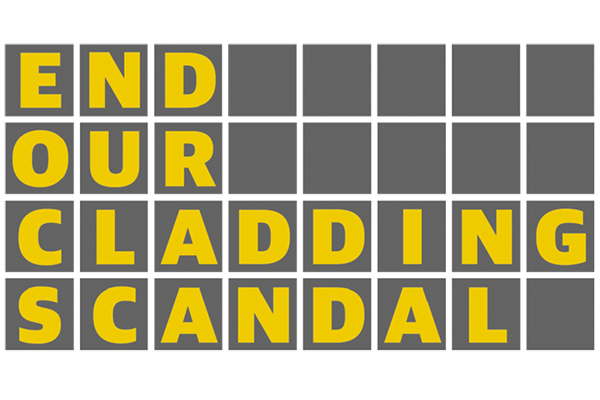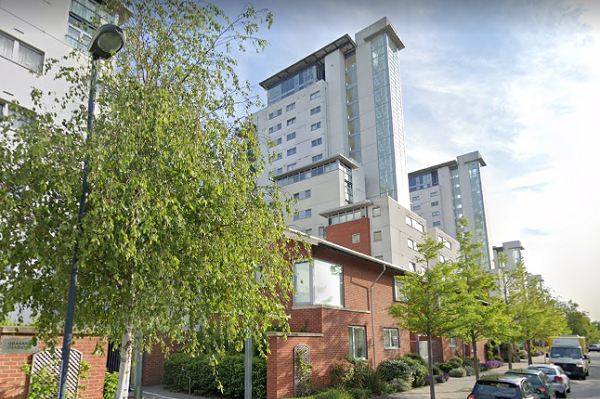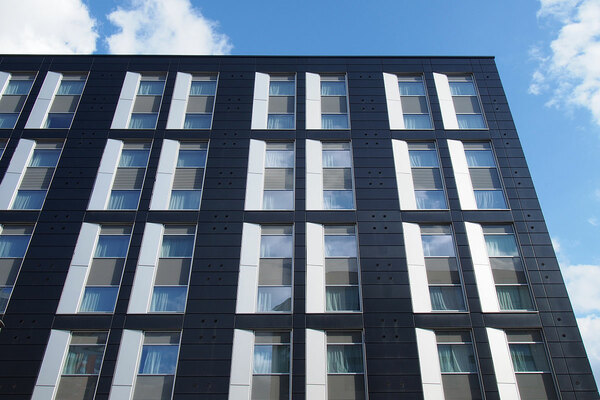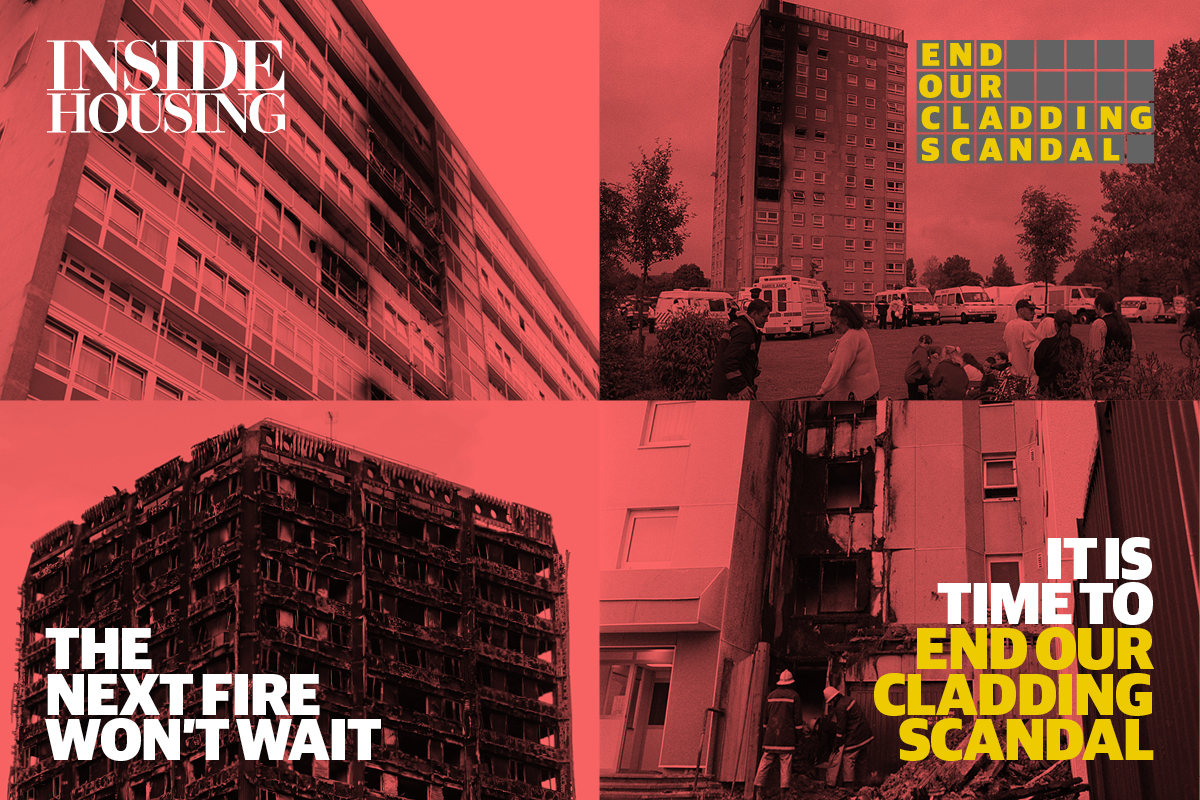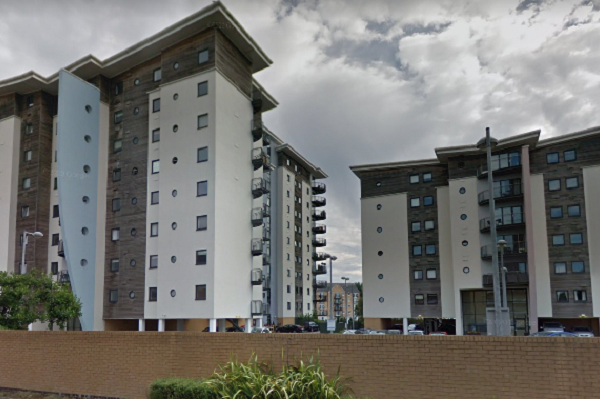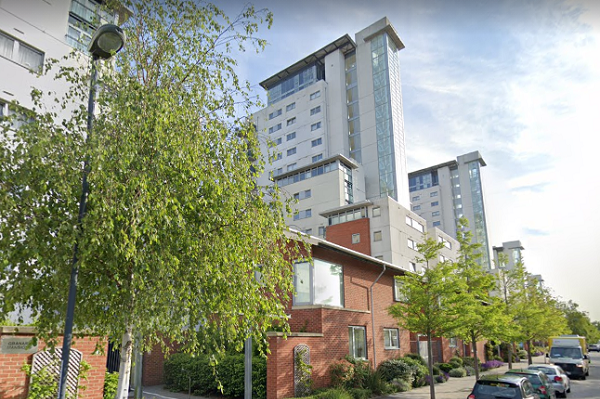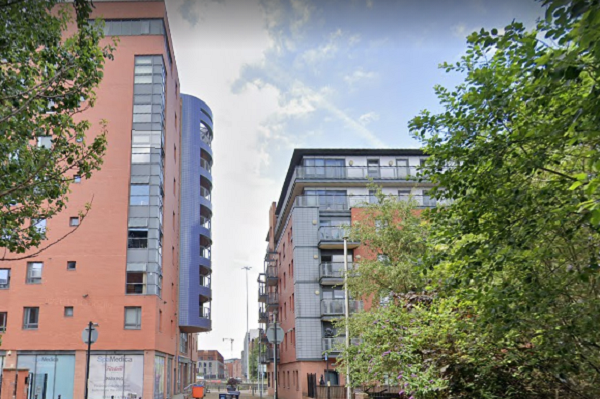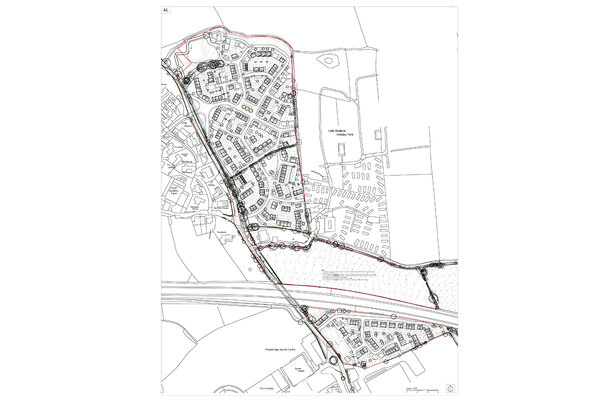You are viewing 1 of your 1 free articles
Developers make £5.2bn profits while leaseholders face bill for fire safety repairs, analysis reveals
Three major house builders have made combined profits of £5.2bn since the Grenfell Tower fire despite leaseholders in properties they developed facing life-changing bills for fire safety repairs, new analysis reveals.
Inside Housing has spoken to leaseholders in homes built by Barratt Homes, Bellway and Taylor Wimpey who face the prospect of bills of up to £58,500 each to repair their buildings.
Analysis of their accounts, carried out as part of the End Our Cladding Scandal campaign, shows that the four companies have made £5.2bn in profits since 2017/18 – a figure that will rise substantially when Bellway and Taylor Wimpey post results for 2019/20.
The firms have also seen income of £27.7bn in this period and have paid out dividends of £2.4bn to shareholders, with more than a third of their income coming through taxpayer-backed Help to Buy schemes.
But residents of homes built by each of the developers face the prospect of huge bills to remove combustible materials from external walls or to fix missing fire breaks.
The developers argue that the homes were compliant with regulations when built, and that they no longer own the freehold on the properties. They are just three examples of several UK house builders refusing to foot the bill for fire safety defects in properties they developed.
Jake Ellis, a leaseholder and a founding member of the End Our Cladding Scandal campaign, said: “It is not right that the cost of fixing defective buildings falls on the residents of these homes, while those who have made such vast profits from selling them walk away without paying a penny to make them safe.
“Establishing who is legally responsible is complex, and many of these companies know they cannot be held to account.
“That is why we are calling on the government to make them contribute to the cost of fixing the buildings they built and sold through a levy system. It is the only fair way to ensure our homes are made safe at pace and those who have profited from this mess are made to pay to clean it up."
Cerys Owen, a resident of Taylor Wimpey’s Victoria Wharf development in Cardiff, told Inside Housing: “It is gut-wrenching to see the profits these companies make year after year while we face the prospect of bankruptcy to pick up the costs for their failures.
“It is completely unjust that this is the reality that thousands wake up to each day. The government need to take action to ensure that those responsible for this crisis are held accountable and cover the costs of fixing it. This is not our mess.”
They are just some of an estimated 300,000 residents of tall buildings around the country that require major fire safety works in the aftermath of the Grenfell Tower fire, many of whom face the prospect of footing the bill.
Applications to the government’s £1bn Building Safety Fund have been made, but with the fund vastly oversubscribed and strictly limited to cladding removal it is highly unlikely to cover the full cost of works.
While some developers stepped in to cover the cost of this work when knowledge of the first affected blocks began to emerge in 2018, most have now backed away from taking responsibility.
They insist that they owe no duty to leaseholders in buildings they have sold to investors, or that works complied with regulations at the time the blocks were built.
The End Our Cladding Scandal campaign, devised by Inside Housing alongside Grenfell survivors and leaseholders impacted by the cladding crisis, calls on the government to pay for remediation up front, but to consider the imposition of a levy on developers to fund this work.
This is modelled on an approach taken in Victoria, Australia, where there are similar issues with dangerous cladding. The approach requires developers to pay a levy to secure building permits, which contributes to a remediation fund.
Dave Richards, a resident of Barratt Homes’ Royal Artillery Quay, added: “Making me pay for their faults is an act of financial abuse. The staggering amount of £40,000 is unjust and something I simply cannot afford. It will ruin my future life.”
Giles Grover, a resident of Bellway’s City Gate development in Manchester, said: “What Bellway has been allowed to get away with is an absolute disgrace. The reality is that it has completely disregarded its responsibility for our homes having been built so poorly.
“Despite years of relying on massive government support through Help to Buy and being able to pay out millions to its directors and shareholders, Bellway refuses to even consider helping those who actually live in the unsafe buildings they developed.”
While the government has focused on the need for building owners to repair blocks, it has stopped short of putting direct pressure on developers, who often sell the freehold on blocks they build to investment companies.
The Defective Premises Act limits developer liability to six years from construction, meaning they cannot be held to account if defects are found after this point.
The buildings are:
Victoria Wharf, Cardiff
Picture: Google Street View
Developer: Taylor Wimpey
The development, completed by Taylor Wimpey in 2008, covers seven blocks and 479 flats overlooking Cardiff bay. An intrusive survey has been carried out on one of these blocks and found an expanded polystyrene (EPS) cladding system as well missing fire breaks.
Residents are waiting for surveys to be carried out on the other blocks but they expect to find the same issues across the development. They are expecting to have to foot a bill of around £58,500 per flat – 217% of the average salary in Cardiff.
Leaseholders have seen their service charge bills rocket in the aftermath of the Grenfell Tower fire, with some three-bed apartments paying £8,000 each year. Building insurance has increased from £58,000 to £629,000 in the past year. As they are in Wales, they are outside the scope of England’s Building Safety Fund.
Ms Owen's personal service charge has increased from £193 a month to just under £500.
“We can’t sell. No one has attempted to sell because we can’t even get an estate agent to come and look at our property,” she explained.
Ms Owen noted that Taylor Wimpey has made a “goodwill gesture” by offering to pay around £50,000 for internal fire remediation works, but that it has refused to accept responsibility for any other works – expected to reach £28m.
The leaseholders at this development in Wales have already spent £1.13m on interim fire safety measures such as waking watches, according to Ms Owen.
Taylor Wimpey has made profits of £1.65bn since 2017/18 – not including a figure for 2020.
A Taylor Wimpey spokesperson said: “We recognise that this is a complex and difficult matter for Victoria Wharf residents.
“Taylor Wimpey has no ownership or legal interest in the buildings at Victoria Wharf. The freeholder, together with the management company, FirstPort, are responsible for the fire safety of the buildings, including the external wall system.
“We have committed to covering 50% of the costs associated with internal fire compartmentation works, which are now under way. We are aware that FirstPort are considering additional surveys at Victoria Wharf, as part of their ongoing fire safety obligations.”
Royal Artillery Quays, Woolwich, London
Picture: Google Street View
Developer: Barratt Homes
Built in 2003, Royal Artillery Quays is home to 418 leaseholders across eight blocks.
Barratt Homes carried out some initial works fixing fire breaks between flats and community areas at a cost of £300,000 but this is just one aspect of the fire safety work required on the building.
The main issue is an EPS behind a cement facade that will cost in the region of £13m to resolve.
In total the remediation is expected to cost around £19m, averaging about £45,000 per flat.
A recent poll of the residents in the building showed that if they were made to foot the bill, 63% of the leaseholders would be facing bankruptcy.
Barratt has made profits of £2.24bn since 2017/18.
A spokesperson for Barratt Developments said: “The cladding system at Royal Artillery Quays met the requirements of the building regulations in place at the time of construction in 2003 and was signed off by an independent approved inspector.
“Having sold the freehold following completion, Barratt has no continuing involvement in the building and is not responsible for any work required to bring the external wall system in line with the latest guidance from the MHCLG.”
Update: at 11:40am, 12.10.20: story edited to make clear that Barratt paid for internal fire breaks works between flats. It previously stated that leaseholders face the bill for these but this was included in Barratt's £300,000 works.
The percentage of leaseholders facing bankruptcy was also amend from 68% to 63%.
City Gate, Manchester
Picture: Google Street View
Developer: Bellway
The City Gate development in the heart of Manchester, completed by Bellway in the early 2000s, consists of three buildings containing 329 flats.
Post-Grenfell, three buildings were found to have aluminium composite material (ACM) cladding, while two of the towers have timber balconies that need remediation.
Leaseholders were initially told by the property management company that they would have to contribute £7,000 per flat to have the works completed – although a submission to the government’s ACM fund has now been made, and works are expected to start by the end of the year.
But fire defects that are not covered by the government’s ACM fund have also been identified and leaseholders face an anxious wait to see whether their bid to the government’s Building Safety Fund has been successful.
In the meantime, property sales in the 329-unit development have ground to halt, with no sales going through in the past two years compared with roughly 20 to 30 a year in normal times, according to Giles Grover, a leaseholder at City Gate.
An application for government funding is understood to be in place, but Bellway has made no commitment to fund the works if it fails. The work is expected to total £30,000 per leaseholder.
“We have asked for contributions and they said ‘in the spirit of the corporation we will help’ and then 13 months later they have just kicked it into the long grass. They have just gone quiet,” Mr Grover said.
A spokesperson for Bellway said: “Bellway disposed of our interest in the City Gate development in 2010 so no longer has any involvement with the building. They were built in accordance with build regulations in place at the time of construction.”
Another resident at a different Bellway block, who wanted to remain anonymous, added: “I wake up every morning thinking about the consequences of a fire and go to sleep thinking about the devastating financial consequences if I have to pay to fix this. Bellway’s failure to engage with me and my fellow residents shows a complete disregard for our mental health.
“I put my life savings into purchasing my flat and now it is worthless and dangerous. All I want is to see Bellway commit to doing the right thing and protect us.”
Bellway has made profits of £1.3bn since Grenfell – not including a figure for 2020.
10 steps to End Our Cladding Scandal
Based on the recommendations of the Housing, Communities and Local Government Select Committee and backed by a range of sector bodies and MPs from across the political spectrum, these are Inside Housing’s 10 steps to End Our Cladding Scandal:
- The government must lead an urgent national effort to remove all dangerous cladding from buildings by June 2022.
- The Building Safety Fund must cover all buildings, regardless of height, and a range of internal and external fire safety defects, not just cladding.
- The government should provide the money up front and then seek to recover it from any responsible parties or via a temporary levy on development.
- Social housing providers must have full and equal access to the fund.
- The government must compel building owners or managers to be honest with residents about fire safety defects.
- The government should cover the cost of interim safety measures.
- The government should act as an insurer of last resort and underwrite insurance where premiums have soared.
- A fairer, faster process is needed to replace the EWS form and funding is necessary to ensure all buildings requiring a form are surveyed within 12 months.
- Mental health support must be offered to affected residents.
- Protecting residents from historic and future costs must be a key commitment of new building safety legislation.
End Our Cladding Scandal: campaign backers
Organisations:
- Grenfell United
- Resident cladding action groups: UK Cladding Action Group, Manchester Cladiators, Leeds Cladding Scandal, Birmingham Leaseholder Action Group, London Cladding Action Group, Liverpool Cladiators, One Housing Action Group, Homeowners of L&Q, Richmond House Residents and others
- A collective of lawyers representing Grenfell Tower families at the public inquiry
- The Sunday Times
- Shelter
- Fire Brigades Union
- Royal Institute of British Architects
- Chartered Institute of Housing
- National Housing Federation
- Unison
- National Leasehold Campaign
- Leasehold Knowledge Partnership
- Engage Liverpool
- Federation of Private Residents Associations
- Institute of Residential Property Management
Individuals and experts:
- TV presenter Kevin McCloud
- TV presenter Phil Spencer
- Architect George Clarke
- Actor and comedian Kathy Burke
- Actor Carey Mulligan
- Singer/songwriter Marcus Mumford
- Hip hop artist and campaigner Lowkey
- West Midlands Police and Crime Commissioner, Simon Foster
- Actor Ross Mullan (Game of Thrones)
- Leilani Farha, dormer UN special rapporteur for housing
- Jonathan Evans, chief executive of Ash & Lacy
- Building Safety Register co-founder Matt Hodges-Long
- Professor Sue Bright
- Executive coach Gill Kernick
- Safety consultant Stephen MacKenzie
- Safety consultant Phil Murphy
- Architect Francis Maria Peacock
- Chris Blythe OBE, former chief executive of the CIOB
- Solicitor Giles Peaker
Politicians:
- Andy Street, metro mayor of West Midlands (Conservative)
- Sadiq Khan, mayor of London (Labour)
- Andy Burnham, mayor of Greater Manchester (Labour)
- Steve Rotheram, metro mayor of Liverpool City Region (Labour)
- Mike Amesbury MP, shadow housing minister (Labour)
- Matthew Pennycook MP (Labour)
- Kim Johnson MP (Labour)
- Shabana Mahmood MP (Labour)
- Liam Byrne MP (Labour)
- Ian Byrne MP (Labour)
- Abena Oppong-Asare MP (Labour)
- Margaret Hodge MP (Labour)
- Ruth Cadbury MP (Labour)
- Apsana Begum MP (Labour)
- Rushanara Ali MP (Labour)
- Sam Tarry MP (Labour)
- Mohammed Yasin MP (Labour)
- Lucy Powell MP (Labour)
- Rebecca Long-Bailey MP (Labour)
- Justin Madders MP (Labour)
- Florence Eshalomi MP (Labour)
- Sam Terry MP (Labour)
- Jeff Smith MP (Labour)
- Mohammed Yasin MP (Labour)
- Meg Hillier MP (Labour)
- Bell Ribeiro-Addy MP (Labour)
- Feryal Clark MP (Labour)
- John Cruddas MP (Labour)
- Virendra Sharma MP (Labour)
- Graham Stringer MP (Labour)
- Diane Abbott MP (Labour)
- Andrew Mitchell MP (Conservative)
- Sir Peter Bottomley MP (Conservative)
- Bob Neil MP (Conservative)
- Bob Blackman MP (Conservative)
- Anne Marie Morris MP (Conservative)
- Stephen McPartland MP (Conservative)
- Matthew Offord MP (Conservative)
- Kevin Hollinrake MP (Conservative)
- Stephen Hammond MP (Conservative)
- Daisy Cooper MP (Liberal Democrat)
- Christine Jardine MP (Liberal Democrat)
- Sarah Olney MP (Liberal Democrat)
- Jamie Stone MP (Liberal Democrat)
- Caroline Lucas MP (Green)
Lord Young of Cookham (Conservative)
- Lord Bourne of Aberystwyth (Conservative)
- Lord Gary Porter of Spalding (Conservative, former chair of the Local Government Association)
- Lord Shipley OBE (Liberal Democrat)
- Lord Stunnell OBE (Liberal Democrat)
- Baroness Jones of Moulsecoomb (Green)
- Baroness Finlay of Llandaff (Crossbench)
- Cllr Sir Richard Leese, leader of Manchester Council (Labour)
- Cllr Ian Ward, leader of Birmingham Council (Labour)
- Philip Glanville, mayor of Hackney (Labour)
- Paul Dennett, mayor of Salford (Labour)
- Sian Berry AM (Green)
- Caroline Pidgeon AM (Liberal Democrat)
- Tom Copley AM, deputy mayor for housing (Labour)
- Leonie Cooper AM (Labour)
- Murad Qureshi AM (Labour)
- Andrew Dismore AM (Labour)
- Neil McEvoy MS (Labour)
- Cllr Jonathan Bartley (Green, co-leader)
- Cllr Douglas Johnson (Green)
- Cllr Suzanne Richards (Labour)
- Cllr Liz Clements (Labour)
- Cllr Maria Toolan (Labour)
- Cllr Christine Banks (Labour)
- Cllr Nick Small (Labour)
- Cllr Geoff Barraclough (Labour)
- Cllr Paul Dimoldenberg (Labour)
- Cllr Martin Whelton (Labour)
- Cllr Jon Connor-Lyons (Labour)
- Cllr Sam Wheeler (Labour)
- Cllr Marcus Johns (Labour)
- Cllr Adam Hug (Labour)
- Cllr Tony Belton (Labour)
- Cllr Zena Brabazon (Labour)
- Cllr Sara Conway (Labour)
- Cllr Mary Daly (Labour)
- Cllr Thomas Stephens (Labour)
- Cllr Krupesh Hirani (Labour)
- Cllr Sarah Bogle (Labour)
- Cllr Darren Paffey (Labour)
- Cllr Joan Davies (Labour)
- Cllr Sem Moema (Labour)
- Cllr Shama Tatler (Labour)
- Cllr Johnson Situ (Labour)
- Cllr Anne Clarke (Labour)
- Cllr Leo Pollak (Labour)
- Cllr James Roberts (Vice Chair of Merseyside Fire and Rescue Authority) (Labour)
- Cllr Annette Wright (Labour)
- Cllr Ken Wood (Conservative)
- Cllr Meirion Jenkins (Conservative)
- Cllr Robert Alden (Conservative)
- Cllr Peter Golds (Conservative)
- Cllr Michael Rutherford (Conservative)
- Cllr Edward Gretton (Conservative)
- Cllr Anton Georgiou (Liberal Democrat)
- Cllr Jayne McCoy (Liberal Democrat)
- Cllr Rabina Khan (Liberal Democrat)
- Cllr Ruth Dombey (Liberal Democrat)
- Cllr Anthony Fairclough (Liberal Democrat)
- Cllr Hina Bokhari (Liberal Democrat)
- Cllr Jenny Batt (Liberal Democrat)
- Cllr Ben Andrew (Liberal Democrat)
- Cllr Andrew Wood (independent, former Conservative)
